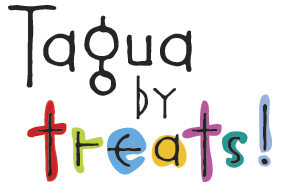What is Tagua?
From the rainforests of Ecuador, natural and sustainable beauty.
Treats Designs jewelry features tagua ("TAG-wuh") beads to create modern and sophisticated designs that don't cost the earth.
Tagua has the scientific name Phytelephas, meaning "plant elephant" because, after being dried and polished, the creamy white, smooth nuts are incredibly similar to elephant ivory. That's why tagua is often called vegetable ivory.

The tagua palm grows in the lowland rainforests of Ecuador and other South American countries. Tagua nuts grow in clusters on the palm, and fall to the forest floor when ripe. Growing and harvesting tagua is one way of preserving rainforest land.
It takes up to 15 years for the tagua palm to produce its first nuts. Each tree produces 20-50 lbs of nuts per year. The nuts take up to 12 months to ripen, until they are the colour and hardness of bone ivory. Once mature, a tagua palm will produce nuts for up to 100 years.
The nut clusters are gathered by people in rainforest communities, then dried for up to six months in the equatorial sun. Harvesting tagua causes no harm to any animals or the forests where it is gathered, and provides an economic incentive for local communities to protect the rainforests.
I work closely with artisans in the small village of Sosote, Ecuador, as the source of my tagua beads. In their workshops, the tagua is carved and handcrafted into a variety of bead shapes. Natural dyes bring beautiful bright colours and the beads are polished in a tumbler until they shine.
My designs are inspired by the rainforests of the world, from the temperate forests of my British Columbia home to the energy and atmosphere of the tropics.
